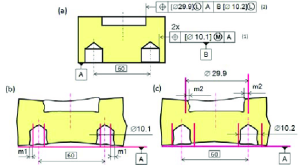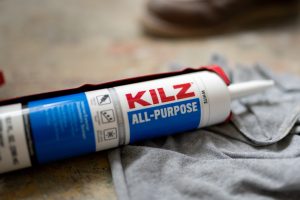The exterior of a house is the first thing that people notice when they come by. A well-maintained exterior not only enhances your home’s curb appeal but also helps protect it from damage caused by weather and other environmental factors. One way to keep your home looking beautiful and protected is to have it painted regularly. The process of painting a room or house exterior goes beyond simply slapping on some paint; it requires careful planning and consideration. From selecting the right color palette to preparing the surfaces and applying multiple coats for durability, each step plays a crucial role in achieving the desired result.
However, painting the exterior of a house can be an expensive endeavor, and many homeowners are unsure about how much it will cost them. The cost of painting a house exterior varies depending on several factors, including the size of the home, type of paint used, labor costs in your area, and any necessary preparation work that needs to be done before painting can begin.
Why painting your house exterior is important

Painting your house exterior is not only aesthetically pleasing, but it’s also crucial for the protection of your home. The harsh weather elements can quickly deteriorate the quality of your paint job and leave your house susceptible to all sorts of damage. Cracks, peeling, and fading can pave the way for more severe issues like water damage or rotting wood. A fresh coat of paint will help protect against these types of damages and prolong the life expectancy of your home.
The cost for painting a house exterior varies based on several factors such as location, size, type of materials used, and complexity. However, when compared to the expenses associated with repairing damages caused by neglecting to paint an exterior surface, painting becomes a more cost-effective solution in the long run. By investing in regular maintenance through repainting every few years or so you are actively avoiding hefty repair expenses that might come up if you let things slide too long.
Factors affecting the cost of painting:
One of the primary factors that can affect the cost of painting a house exterior is the size of the property. The larger your home is, the more paint and supplies will be required to complete the job, which will subsequently drive up costs. In addition to size, another factor that can impact pricing is the condition of your home’s exterior surface. If there are cracks or holes in stucco or wood trim, for example, these may require additional preparation work before painting can begin.
Another factor that can influence costs is color choice. Some colors may require multiple coats to achieve an even finish, while others may involve more complex techniques like shading or blending. Additionally, specialized finishes like textured paint or faux finishes may add extra expenses to your project budget. Ultimately, when it comes to determining cost factors for painting your home’s exterior, it’s always best to consult with a professional painter who can evaluate all aspects of your unique project and provide you with a comprehensive estimate based on their evaluation and experience in the industry.
Size, condition, and materials

When it comes to estimating the cost for painting a house exterior, factors such as size, condition, and materials come into play. The larger the house, the more paint required to cover it. In addition, a larger house may have more intricate details that require additional time and effort from the painter.
The condition of the house’s exterior also affects the cost of painting. If there is peeling or cracking paint, this will need to be scraped off and sanded down before any new paint can be applied. This process requires additional time and labor from the painter, which can increase the overall cost.
Labor costs: How much to expect
When it comes to labor costs for painting a house exterior, there are several factors that can influence how much you should expect to spend. For starters, the size of your home will play a significant role in determining the overall cost, as larger homes require more paint and more time to complete. In addition, the condition of your home’s exterior can also impact labor costs, as homes with peeling or damaged paint may require additional prep work before painting can begin.
Another factor that can influence labor costs is where you live. Labor rates vary depending on location, so if you live in an area with a high cost of living or where wages are generally higher than average, you may need to budget more for labor expenses. Finally, keep in mind that different contractors may have varying rates for their services based on their level of experience and expertise. To get an accurate estimate for your specific project, it’s always best to obtain quotes from multiple contractors and compare them carefully before making a decision.
Per hour or per project

When it comes to painting a house exterior, there are two main pricing options: per hour or per project. Choosing between the two depends on your priorities and budget. If you opt for an hourly rate, you will pay the painter for every hour they work on your project. This is ideal if you have a limited budget and don’t want to spend too much money upfront.
On the other hand, opting for a per-project price means that you will pay a fixed amount regardless of how long it takes to complete the job. This is ideal if you have an unlimited budget and want to ensure that the painter finishes the job thoroughly and efficiently without worrying about clocking in hours as part of the cost.
Cost breakdown: Materials and supplies
When it comes to painting the exterior of a house, materials and supplies play a crucial role in determining the overall cost. The cost of materials typically accounts for 10-20% of the total project cost. Paint is usually the most expensive material used in exterior painting, and its quality determines how long it will last before needing to be repainted.
Other materials include brushes, rollers, drop cloths, masking tape, sandpaper, and cleaning supplies. These can add up quickly depending on the size of the house and level of detail required. Higher-end paint brushes and rollers may cost more upfront but can save money in the long run by providing better coverage with less paint waste.
Paint, primer, caulk, and more

Painting the exterior of your home can be a great way to give it a fresh new look. However, it’s important to consider all the necessary steps and materials involved in order to properly prepare and protect your home. In addition to the paint itself, you’ll need a primer to help ensure adhesion and durability, as well as caulk for filling any gaps or cracks that could allow moisture in.
When it comes to budgeting for an exterior paint job, these additional materials should be factored into your calculations. The cost of primer can vary depending on the quality and quantity needed for your project, but typically ranges from $10-$25 per gallon. Caulk is also relatively inexpensive, with prices varying from $2-$10 per tube depending on brand and type.
DIY vs. hiring a professional painter: Pros and cons
DIY painting can be a cost-effective way to paint the exterior of your house. The materials used for DIY painting are generally less expensive than hiring a professional painter, and you won’t have to pay for labor costs. Additionally, DIY painting allows you to control the pace and quality of the work done on your home.
However, if you lack experience in painting or have physical limitations, it may be best to hire a professional painter. Professionals come equipped with all necessary tools and equipment for the job, including ladders and safety gear. They also guarantee their work, meaning that they will fix any issues that arise during or after the project is completed.
Cost savings versus quality assurance
When it comes to painting the exterior of a house, cost savings and quality assurance are two important factors to consider. While it may be tempting to go for the cheapest option available, this can often lead to poor quality work and potentially more expenses down the line.
On the other hand, investing in high-quality materials and experienced painters may come at a higher cost upfront but can save money in the long run by reducing the need for future touch-ups or repairs. Additionally, quality work also adds value to your home and ensures that it looks its best for years to come. There are also many other benefits to having your home painted, such as: Easy maintenance – Regular exterior painting will reduce the amount of time and money required to maintain the exterior of your home.
Conclusion: Making an informed decision about cost
In conclusion, the cost for painting a house exterior can vary greatly depending on several factors such as the size and condition of the house, the type of paint used, and whether or not any repairs are needed. However, it is important to keep in mind that investing in professional exterior painting can greatly enhance your home’s curb appeal and potentially increase its value. It may seem like a significant expense upfront, but it can save you money in the long run by preventing damage to your home’s exterior. If you’re considering an exterior paint job, be sure to get multiple quotes from reputable contractors and choose one with a track record of quality workmanship.
ALSO READ / indoor floor coatings for garages
Your article helped me a lot, is there any more related content? Thanks!
Your article helped me a lot, is there any more related content? Thanks!
Your point of view caught my eye and was very interesting. Thanks. I have a question for you.
сколько стоит написать реферат купить реферат срочно
Your point of view caught my eye and was very interesting. Thanks. I have a question for you.
продамус промокоды https://prodamus-promokod1.ru/ .
промокод продамус vc.ru/services/1527889-prodamus-promokod-vcru-skid .
промокод на подключение платежного модуля геткурс https://platezhnyj-modul-getkurs-promokod.ru/ .
Your article helped me a lot, is there any more related content? Thanks!
Your point of view caught my eye and was very interesting. Thanks. I have a question for you.